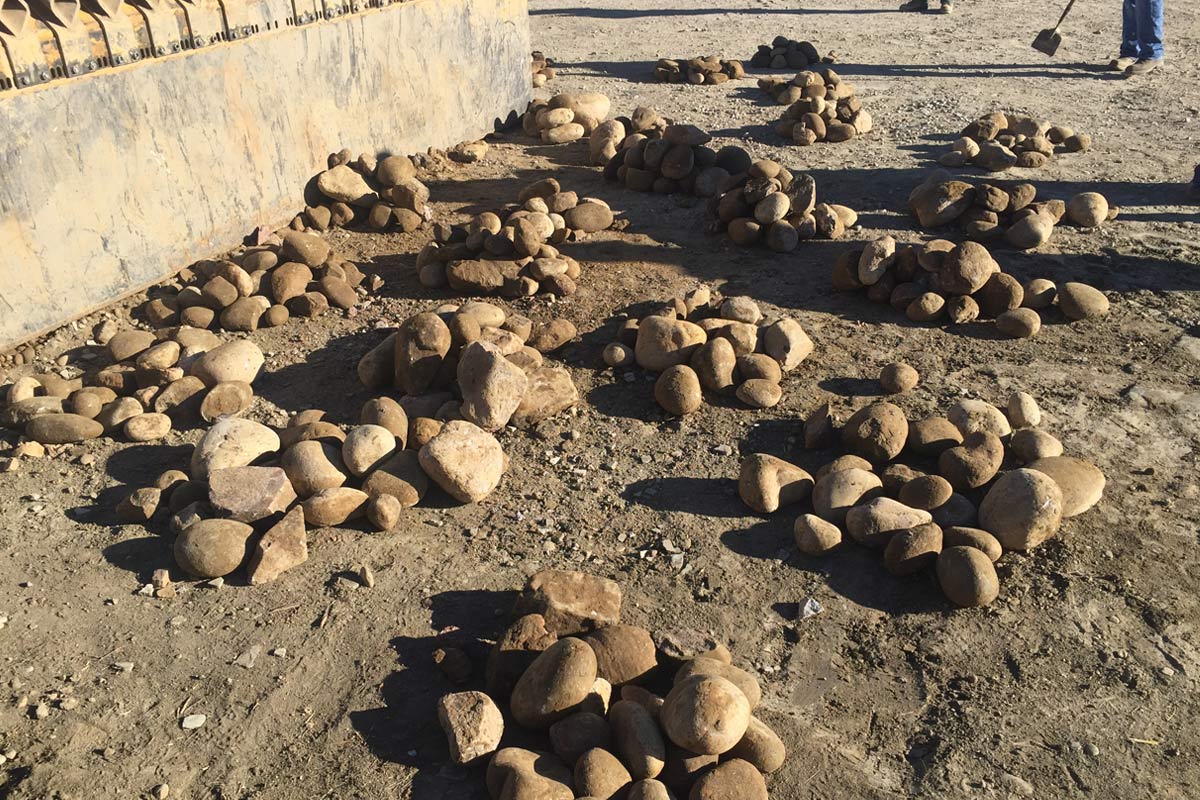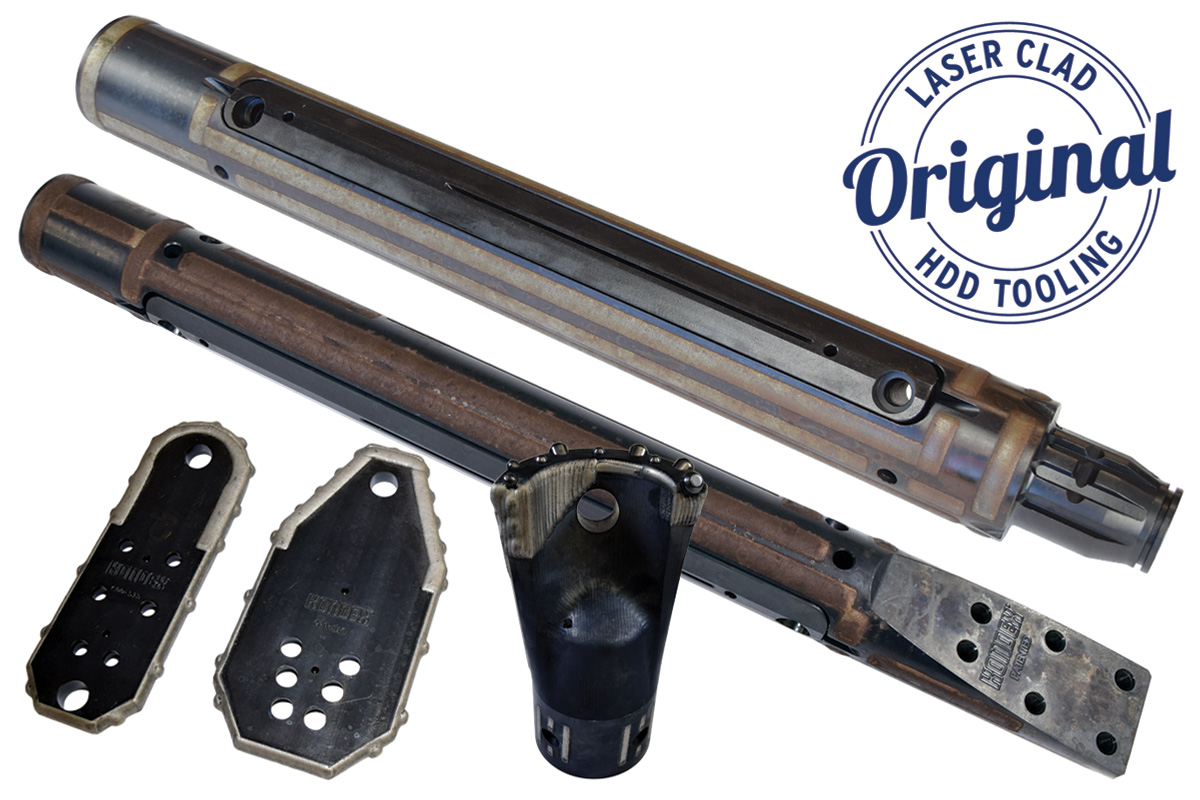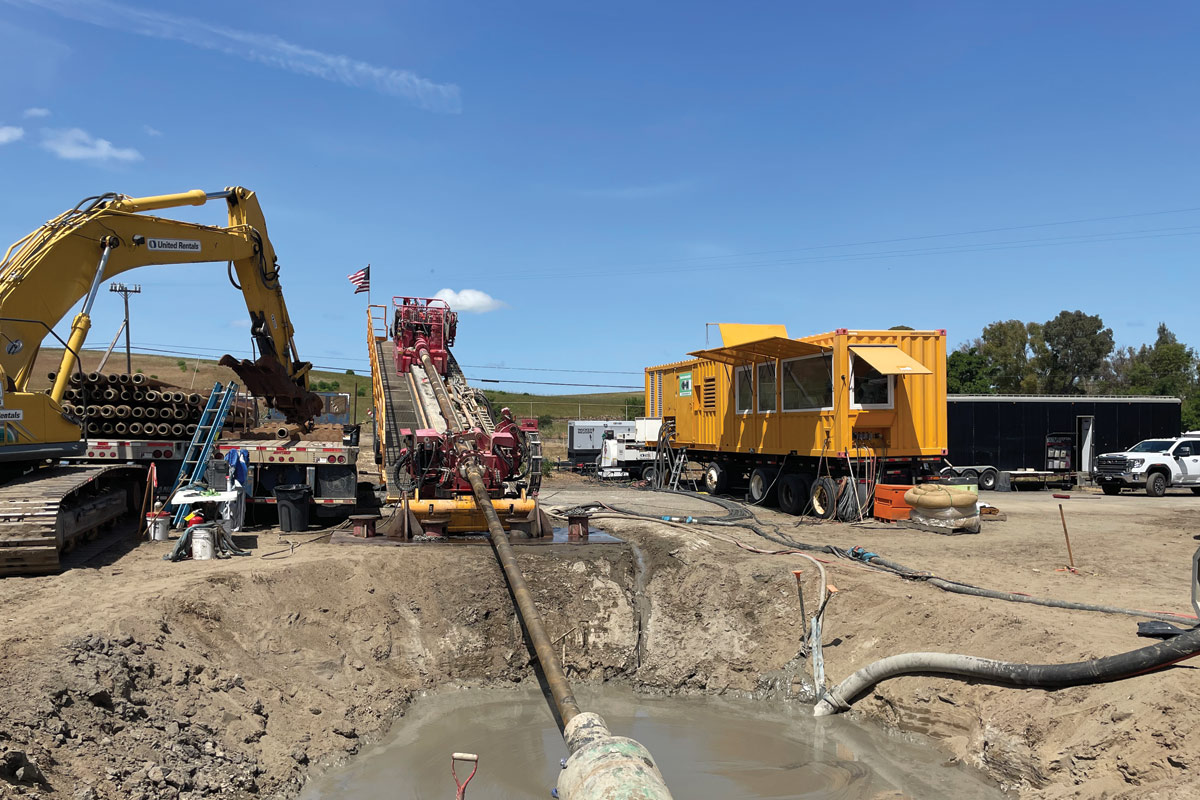Drill Master: The Relationship Between the Mud Motor & the Mud Pump
October 1, 2001
A mud motor is no more effective than the volume of fluid that is pumped through it, which generates power. If the mudflow is on the low side of specifications, the mud motor will have low bit speed and a slower penetration rate. As the pumping rate increases toward the maximum of the flow specification the motor is more powerful and efficient. This is why it is essential to match your mud motor size with the available deliverable mudflow from the pump.Most mud pumps used in the directional boring industry run at higher speeds to operate mud motors. The draw back is that the mud pumps lose operating efficiency, particularly as mud viscosity increases and the effect of entrained air in the mud magnifies. The pumps experience incomplete filling on the suction phase of the stroke, causing a drop in the volume of fluid actually being pumped.
A properly designed, pressure-fed piston or plunger pump generally has a 96 to 97 percent volumetric efficiency. The loss is due to valves not opening and closing instantly. This efficiency goes down as mud viscosity increases and drops like a rock, if air is in the mud. Air is a hidden monster that can drop the pump efficiency to 50 percent or less. The biggest cause of entrained air in the mud is the cleaning system and its design. By the very nature of cleaning mud, agitation occurs which mixes air into the mud. Higher viscosity mud makes air entrapment worse. The design of the cleaning system must give time for the mud to expel this air before it enters the suction manifold of the pressure pump and cause cavitation damage and loss of pump efficiency. A cleaning system that eliminates sand from the mud will also reduce repair costs to mud motors and pumps.
Small internal diameters of the piping and hoses cause pressure losses as pumping rates increase. This robs available pressure away from the motor, causing a decrease in motor torque and slower boring. The smaller I.D. of the drill pipe of some rigs also tends to require a higher surface mud system pressure to off set piping losses.
Ex: Pressure Drop Comparisons (calculated) to various internal diameters.
Parameters:
45 second viscosity mud pumped at 70 gpm through 15 ft
½-in. I.D. = 625 psi pressure drop
¾-in. I.D. = 87 psi pressure drop
1-in. I.D. = 22 psi pressure drop
1 1/2-in. I.D. = 3 psi pressure drop
Bigger is Better
Small swivel flow passages are another spot that will cause high-pressure losses and reduce efficiency of the system. A tool that eliminates the restriction of the swivel is a high-pressure, side-inlet swivel that allows the pressure hose to be hooked directly to the drill string, thereby bypassing the rig swivel and gearbox spindle.
When talking about mud pump capabilities, you have to keep in mind that when flow rates are represented by manufactures, it is usually a calculated volume based on pumping water at 100 percent efficiency. Air in the mud, the size of the restricted passages, mud viscosity and the length of the various restrictions reduce the true working efficiency of the pumps.
Summarizing, the mud pump brings us to the following conclusions: The true operating efficiency of mud pumps decrease with:
- Entrained air in the mud.
- Increased system pressure due to the internal diameter of the piping from the fluid end to the mud motor or jetting system and high-mud viscosity.
- The size of the nozzle(s) in the bit and the pressure drop created.
- The efficiency within the mud pump.
- Mud viscosity.
It almost goes without saying, but any leaks on the pressured side of the pump, including a leaking piston or plunger packing, reduce efficiency. Sonde housings that have broken windows and allow mudflow to divert out of them reduce efficiency. Leaks in the suction hoses can allow air to enter the system or allow cleaned mud to be lost. What can be done to help eliminate some of the inherent problems so that more mud can get to the motor and bit and do the best job for the work at hand?
- Make sure to minimize air in the mud.
- Use larger pumps than are needed so that the mud pump does not have to be operated at 100 percent. Seventy-five percent of rated speed is a good maximum operating rpm.
- Use larger internal diameter size of the piping and hoses.
- Select drill pipe with the largest internal pipe and connection diameters.
- Repair each leak along the mud system – especially from the pressure end of the mud pump, including plunger packings or leaking pistons.
- Replace a swivel with small internal flow passages with a larger swivel or side entry swivel.
Remember, it’s the little things that separate the pros from the amateurs. Need more be said?




